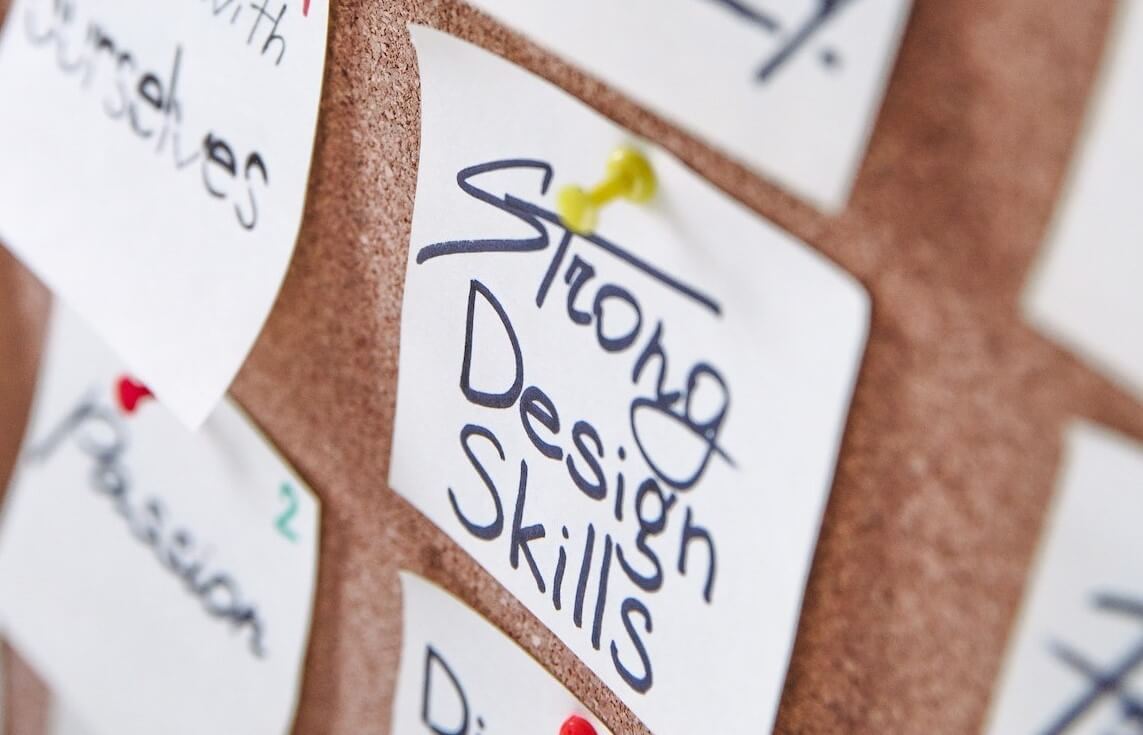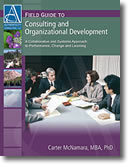All About Team Building
The reader might best be served to first read the topic the Group Dynamics to understand the basic nature of most groups, their typical stages of development and how to support groups to evolve through the early stages. That understanding, along with the guidelines in the following resources, helps the chair or facilitator of the team to support the team to fully develop.
Sections of This Topic Include
Also consider
Related Library Topics
Learn More in the Library’s Blogs Related to Team Building
In addition to the articles on this current page, also see the following blogs that have posts related to Team Building. Scan down the blog’s page to see various posts. Also see the section “Recent Blog Posts” in the sidebar of the blog or click on “next” near the bottom of a post in the blog. The blog also links to numerous free related resources.
How to Build Highly Effective Teams
© Copyright Carter McNamara, MBA, PhD
Too often, teams are formed merely by gathering some people together and then hoping that those people somehow find a way to work together. Teams are most effective when carefully designed. To design, develop and support a highly effective team, use the following guidelines:
1. Set clear goals for the results to be produced by the team.
The goals should be designed to be “SMART.” This is an acronym for:
- Specific
- Measurable
- Achievable
- Relevant and
- Time-bound.
As much as possible, include input from other members of the organization when designing and wording these goals. Goals might be, for example, “to produce a project report that includes a project plan, schedule and budget to develop and test a complete employee performance management system within the next year.” Write these goals down for eventual communication to and discussion with all team members.
2. Set clear objectives for measuring the ongoing effectiveness of the team.
The objectives, that together achieve the overall goals, should also be designed to be “SMART.” Objectives might be, for example, to a) to produce a draft of a project report during the first four weeks of team activities, and b) achieve Board-approval of the proposed performance management system during the next four weeks. Also, write these objectives down for eventual communication to and discussion with all team members.
3. Define a mechanism for clear and consistent communications among team members.
New leaders often assume that all group members know what the leaders know. Consistent communication is the most important trait of a successful group. Without communication, none of the other traits can occur. Successful groups even over-communicate, such that:
- All members regularly receive and understand similar information about the group, for example, about the group’s purpose, membership, status and accomplishments.
- These communications might be delivered through regular newsletters, status reports, meetings, emails and collaboration tools.
4. Define a procedure for members to make decisions and solve problems.
Successful groups regularly encounter situations where they must make decisions and solve problems in a highly effective manner. Too often, the group resorts to extended discussion until members become tired and frustrated and eventually just opt for any action at all, or they count on the same person who seems to voice the strongest opinions. Instead, successful groups:
- Document a procedure whereby the group can make decisions and ensure that all members are aware of the procedure.
- The procedure might specify that decisions are made, first by aiming for consensus within a certain time frame and if consensus is not achieved, then the group resorts to a majority vote.
5. Develop staffing procedures (recruiting, training, organizing, replacing).
Too often, group members are asked to join the group and somehow to “chip in.” Unfortunately, that approach creates “chips,” rather than valuable group members. Instead, if group members go through a somewhat organized, systematic process, then new members often believe that the group is well organized and that their role is very valuable in the group. Successful groups:
- Identify what roles and expertise are needed on the group in order to achieve the group’s purpose and plans – they staff according to plans, not personalities.
- New group members go through a systematic process to join the group – they understand the group’s purpose, their role, their next steps and where to get help.
6. Determine the membership of the group.
Consider the extent of expertise needed to achieve the goals, including areas of knowledge and skills. Include at least one person who has skills in facilitation and meeting management. Attempt to include sufficient diversity of values and perspectives to ensure robust ideas and discussion. A critical consideration is availability – members should have the time to attend every meeting and perform required tasks between meetings.
7. Determine time frames for starting and terminating the team, if applicable.
Now consider the expertise needed to achieve the goals of the team, and how long it might take to recruit and organize those resources. Write these times down for eventual communication to and discussion with all team members.
8. Determine the membership of the team.
What expertise might the team need to achieve the goals of the group? For example, an official authority to gather and allocate resources, or an expert in a certain technology. Always consider if the members will have the time and energy to actively participate in the team.
9. Assign the role of leader – to ensure systems and practices are followed.
The leader focuses on the systems and practices in the team, not on personalities of its members. For example, the leader makes sure that all team members: a) are successfully staffed, b) understand the purpose of the group and their role in it, c) are active toward meeting that purpose and role, and d) utilize procedures for making decisions and solving problems. (Note that the leader does not always have to be a strong, charismatic personality – while that type of personality can often be very successful at developing teams, it often can create passivity or frustration in other members over time, thereby crippling the group.)
10. Assign role of communicator – communication is the life’s blood of teams!
Communication is the most important trait of a successful team. It cannot be left to chance. Someone should be designated to ensure that all members receive regular communications about purpose, membership, roles and status. Communications should also be with people outside the team, especially those who make decisions or determine if the team is successful or not.
11. Identify needs for resources (training, materials, supplies, etc.)
Start from analysis of the purpose and goals. What is needed to achieve them? For example, members might benefit from a training that provides a brief overview of the typical stages of team development and includes packets of materials about the team’s goals, structure and process to make decisions. Consider costs, such as trainers, consultants, room rental and office supplies. How will those funds be obtained and maintained?
12. Identify the costs to provide necessary resources for the team.
Consider costs, such as paying employees to attend the meeting, trainers, consultants, room rental and office supplies. Develop a budget that itemizes the costs associated with obtaining and supporting each of the resources. Get management approval of the budget.
13. Contact each team member.
Before the first meeting, invite each potential team member to be a part of the team. First, send him or her a memo, and then meet with each person individually. Communicate the goals of the project, why the person was selected, the benefit of the goals to the organization, the time frame for the team effort, and who will lead the team (at least initially). Invite the team member to the first meeting.
14. Early on, plan team building activities to support trust and working relationships.
Team building activities can include, for example, a retreat in which members introduce themselves, exercises in which members help each other solve a short problem or meet a specific and achievable goal, or an extended period in which members can voice their concerns and frustrations about their team assignments.
15. Carefully plan the first team meeting.
In the first meeting, review the goals of the team, why each member was selected, the benefit of the goals to the organization, the time frame for the team effort, who will lead the team (at least, initially), when the team might meet and where, and any changes that have occurred since the individual meetings. Have this information written down to hand out to each member. At the end of the meeting, ask each person to make a public commitment to the team effort.
16. Regularly monitor and report on status of team members toward achieving the goal.
It is amazing how often a team starts out with a carefully designed plan, but then abandons the plan once the initial implementation of the plan is underway. Sometimes if the plan is behind schedule, team members conclude that the project is not successful. Plans can change – just change them systematically with new dates and approval of the changes.
17. Support team meetings and the members’ processes in the team.
At this point, it is critical that supervisors of team members remain available to provide support and resources as needed. The supervisor should regularly monitor team members’ progress on achieving their goals. Provide ongoing encouragement and visibility to members. One of the most important forms of
support a supervisor can provide is coordination with other supervisors to ensure that team members are freed up enough to attend meetings.
18. Regularly celebrate team members’ accomplishments!
One of the best ways to avoid burnout is to regularly celebrate accomplishments. Otherwise, members can feel as if they are on treadmill that has no end. Keep your eye on small and recurring successes, not just the gold at the end of the rainbow.
Also consider
Team Building Primer
The History of Team Building
Team Building – Does Team Building Actually Work?
© Copyright Fresh Tracks
An article in The Wall Street Journal* suggested that while team building exercises may be fun (for some people), they really don’t do much to solve workplace issues.
Team building doesn’t just mean getting the team together
Team building doesn’t just mean getting the team together
For example, sales executive Paul Garvey claimed that the most insightful team-building exercise he ever participated in involved paintball, which in no way helped to resolve the relationship issues back at the office. Speaking of his former company, he said that colleagues would poach each other’s deals while
their manager played favourites. Someone decided a paintball exercise would help. It didn’t, and merely reinforced the divisions and favouritism already present.
Another instance of completely inappropriate team building involved the team from a contractor on an Apollo space project. They were asked by their HR department to participate in a role-playing exercise where they had to return safely from the North Pole. Their day-to-day job involved helping astronauts return safely from space. What additional insights into teamwork did HR think this role play could teach them?
The point is that these weren’t team building programmes at all, rather they were generic activities imposed upon teams without any real consideration for what the team wanted, or needed.
Similarly, while it may be fun and friendly, a corporate fun day involving inflatable suits where you hurl yourself at a Velcro wall, sumo wrestling a colleague, bungee running, quad biking, karting or clay pigeon shooting, won’t necessarily build team relationships or address any problems in the group. While it may be just the right event for a seasonal celebration, especially if it involves families or partners, this kind of “team build” is seen mainly as an informal motivational activity. ”They make us feel good,” said Margaret Neale, Professor of Organizational behaviour at Stanford’s Graduate School of Business. “What they don’t do is improve team performance.”
For this, you need a more considered approach and above all, something where the objectives are clearly stated and can be met. You need to take into account specific issues that need to be addressed and the sorts or personalities involved in the team. The resulting programme could well involve a ruthless battle for a trophy in an inflatable Olympics arena, but for a hard-working, hard-playing and highly competitive sales team, perhaps this might be exactly what’s needed.
For most, however, while it may be fun to get out of the office, you can’t expect that blasting each other with paint pellets is going to be much of an exercise in resolving trust or communication issues. Perhaps a programme involving something a bit more creative and less physical – indoors or outdoors – with plenty of time for discussion is a good place to start. There are always going to be those resistant to the very idea of “team building” or others whose comfort zone is very small. Acknowledging this and creating a programme that takes it into account is going to pay far bigger dividends than forcing them to jump out of aeroplanes or role play in Arctic expeditions.
Also consider
All About Facilitation
Team Building Activities
Some Common Types of Teams
Leading, Facilitating and Motivating Teams
Also consider
Leadership
Enhancing Effectiveness and Performance of Teams
Evaluating Team Performance
Also consider
Evaluations
General Resources
For the Category of Facilitation and Teams:
To round out your knowledge of this Library topic, you may want to review some related topics, available from the link below. Each of the related topics includes free, online resources.
Also, scan the Recommended Books listed below. They have been selected for their relevance and highly practical nature.











